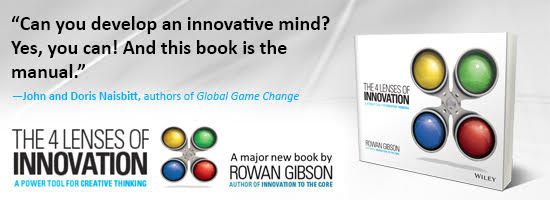This Children’s Hospital in Dallas is Reimagining the Healthcare Business Model
 By any measure, Children’s Health in Dallas is a world class institution. It boasts a top-notch medical staff, is consistently ranked among the best children’s hospitals in the country and features a Level 1 Trauma Center. Yet by 2011, despite the accolades, its CEO, Chris Durovich, was beginning to have doubts about the center’s impact on the community.
By any measure, Children’s Health in Dallas is a world class institution. It boasts a top-notch medical staff, is consistently ranked among the best children’s hospitals in the country and features a Level 1 Trauma Center. Yet by 2011, despite the accolades, its CEO, Chris Durovich, was beginning to have doubts about the center’s impact on the community.
The problem was that, although its patients were getting excellent care once they entered the facility, the health indicators in the community as a whole were getting worse, especially with regard to chronic conditions such as diabetes and asthma. Durovich was determined to fix the problem.
So he brought in Peter Roberts, a longtime healthcare executive, to diagnose the problems in the community and design solutions that would make a positive impact. Over the past four years he, along with the Business Innovation Factory, have been developing an innovative new model that reimagines how the healthcare system works with the communities it serves.
Designing Business Models for Social Impact
As a student at American University’s International Service Program, Elizabeth Stefanski was determined to make an impact on the world. Yet during a summer, she spent doing fieldwork in Kenya, she could see that the traditional aid model was broken. The problem wasn’t a lack of good will or even funding, the programs just weren’t achieving results.
She found early inspiration from Muhammad Yunus, the legendary founder of Grameen Bank, who invented the concept of microcredit. What impressed her was how designing a sustainable business model could help to scale social programs and deliver dramatically better results. That’s what she decided to devote her career to.
After college, she joined Ashoka, the innovative social entrepreneurship organization founded by Bill Drayton. It was there she saw a genuine opportunity to disrupt aid. For example, one program she worked on helped create a platform that provided reputational information for day workers and their employers, allowing both to drastically reduce the risk of exploitation.
In 2011, Stefanski joined the Business Innovation Factory and soon began working with Durovich and Roberts to help Children’s Medical Center Dallas create a more pervasive and positive impact on the community of Dallas.
Flipping the Lens
Traditionally, the way medical professionals seek to improve healthcare is by improving hospital operations through better training, procedures, and processes. But in this case, the Children’s Medical Center was already considered one of the finest institutions in the country. So rather than looking inside the hospital for answers, Stefanski and her team went into the community.
Their first task was to diagnose the problem. “We wanted to understand why delivering world-class treatment wasn’t having the desired impact,†Stefanski told me. So her team sifted through hospital records and identified 32 families which had at least one member suffering from a chronic condition, about half of which used the Emergency Room for primary care.
Once the families agreed to take part in the study, the team interviewed each family and then observed them in the context of their daily life, going to the grocery store, playing with the kids at the park and so on. They also had them do “projection activities,†such as asking family members to create a collage about how they see the world and various situations within it.
What they found is that the families didn’t think a lot about health specifically. What concerned them was general well-being, including how they felt both mentally and physically, how effectively they were able to respond to life situations, how they were connected or disconnected with knowledge that could help them navigate life’s obstacles and how much support they felt from other family members, friends and members of the community.
The team also saw that the children, to a large extent, experienced the world through their family and that the healthcare system was largely undermining, rather than supporting social levers of support. It seemed that there could be a great opportunity to empower “first generation changemakers†to help the families interact with the healthcare system in a more positive way.
Building the First Prototypes
Once Stefanski and her team had spent six months researching the problem and developed a workable hypothesis, the way forward seemed clear. They set out to design a community outreach program through 16 primary care centers that would leverage, rather than undermine, community and family relationships to promote better well-being.
Alas, while the idea seemed to be a no-brainer, it proved to be unworkable. The administrators at the primary care centers were reluctant to burden their already overworked medical staff with additional responsibilities. They were, in many ways, already invested in the traditional model. As they saw it, it was their job to provide care for the sick, not to do community work.
So the team set out to build the necessary infrastructure within the community itself. They designed an assessment tool, called the “family well-being quotient,†which identified a set of behaviors that determined well-being and evaluated the families every two weeks for three months.
At the same time, they gave the families a set of design challenges to come up with programs that would improve their well-being. Two of these —”What’s Cooking Dallas,” a food and nutrition program created for and by the families themselves and “Your Best You,” a three-week educational camp with a hip-hop theme — were put into action.
Over the next three months, well-being scores of the participating families improved markedly.
Expanding the Experiment
Creating the first prototypes helped the team learn about the conditions for well-being. They found that well-being scores improved when people were invited to participate and given an equal voice. The families also needed to be pushed out of their comfort zone but then given a safe space to reflect. Most of all, they need to feel a sense of purpose in what they were doing.
Armed with new knowledge, the team is in the process of launching a new prototype. Navigators from Children’s Health, who currently go out to the community to identify symptoms and encourage adherence in patients, are now being retrained and repurposed to empower well-being in families as a whole.
For example, previously a navigator might visit a home of a child who suffered an acute event of diabetes or asthma and check for symptoms, such as glucose levels or the presence of allergens. They might also bring along an extra inhaler or some pamphlets on diet. The goal was to transition that acute event into a manageable condition.
Now, however, the goal will be customized goal setting related to well-being. For example, if the family is having problems with rodents in their building, they might be directed to a community housing advocate, so that they can avoid a high-pressure situation with an indifferent landlord that would be bound to increase the stress level of the whole family, including the children.
Creating Sustainable Change Through an Innovative Business Model
Over the past 4 years, Children’s Health has learned an enormous amount. As Peter Roberts told me, “Through the work of Elizabeth and her team, we have seen demonstrable proof that by increasing the scope of our care to encompass the social determinants of health—including the patients’ families—we can significantly improve medical outcomes while reducing costs.â€
In fact, in one program that was focused on asthma patients, it was found that linking community-based public health programs to treatment reduced emergency room visits by almost 50%. That frees up a substantial amount of resources that can be deployed elsewhere. Yet to make these programs sustainable, there needs to be a business model to support them.
To achieve that Roberts and his colleagues at Children’s Health have designed an innovative HMO that will enroll 15,000 children and their families next year. The plan will be funded through the assumption of Medicaid liabilities for the children and using a portion of those funds to finance navigators to support well-being among the HMO members.
Another important aspect of the program is that although the navigators will be paid through Children’s Health, they will integrate with the Children’s Health and Wellness Alliance, a nonprofit that weaves together more than 100 community resources such as schools, social service, and faith-based organizations.
So in a sense, Children’s Health is looking to do a whole lot more than treat diseases, it’s looking to heal entire communities. As Peter Roberts told me, “it’s critically important that we look beyond the care we deliver in the hospital, we have to engage people where they live and the communities that serve them.”
Wait! Before you go…
Choose how you want the latest innovation content delivered to you:
- Daily — RSS Feed — Email — Twitter — Facebook — Linkedin Today
- Weekly — Email Newsletter — Free Magazine — Linkedin Group
 Greg Satell is a popular speaker and consultant. His first book, Mapping Innovation: A Playbook for Navigating a Disruptive Age, is coming out in 2017. Follow his blog at Digital Tonto or on Twitter @Digital Tonto.
Greg Satell is a popular speaker and consultant. His first book, Mapping Innovation: A Playbook for Navigating a Disruptive Age, is coming out in 2017. Follow his blog at Digital Tonto or on Twitter @Digital Tonto.
NEVER MISS ANOTHER NEWSLETTER!
LATEST BLOGS
Three things you didn’t know about credit cards
Photo by Ales Nesetril on Unsplash Many of us use credit cards regularly. From using them for everyday purchases to…
Read MoreFive CV skills of a business-minded individual
Photo by Scott Graham on Unsplash The skills listed on a CV help employers quickly understand your suitability for a…
Read More



